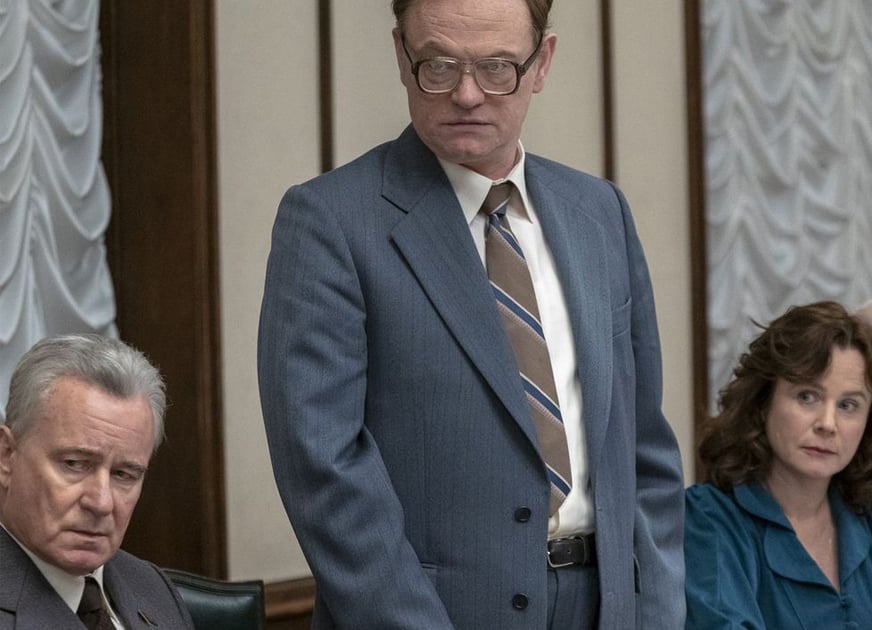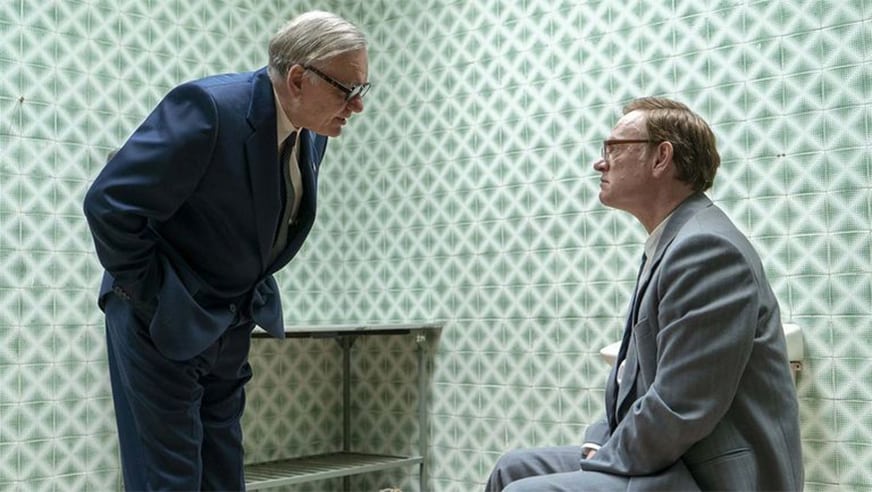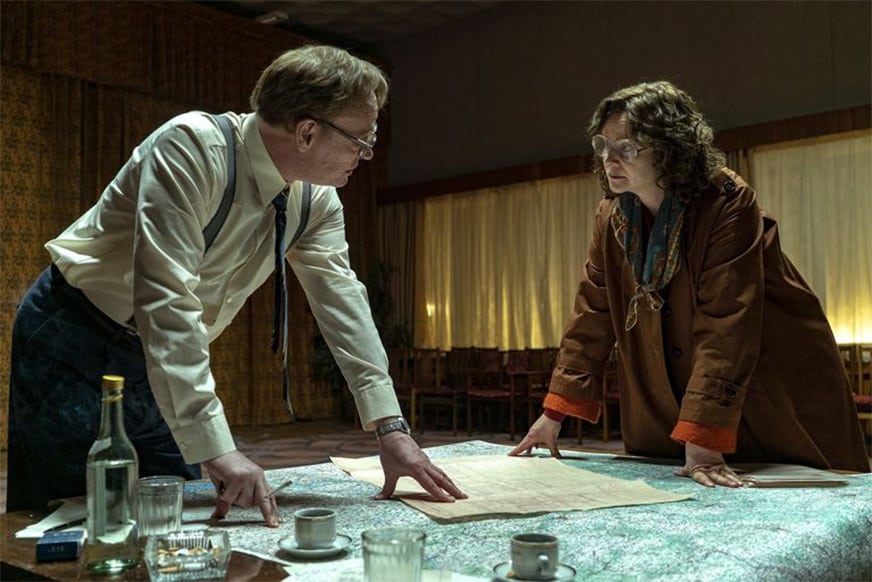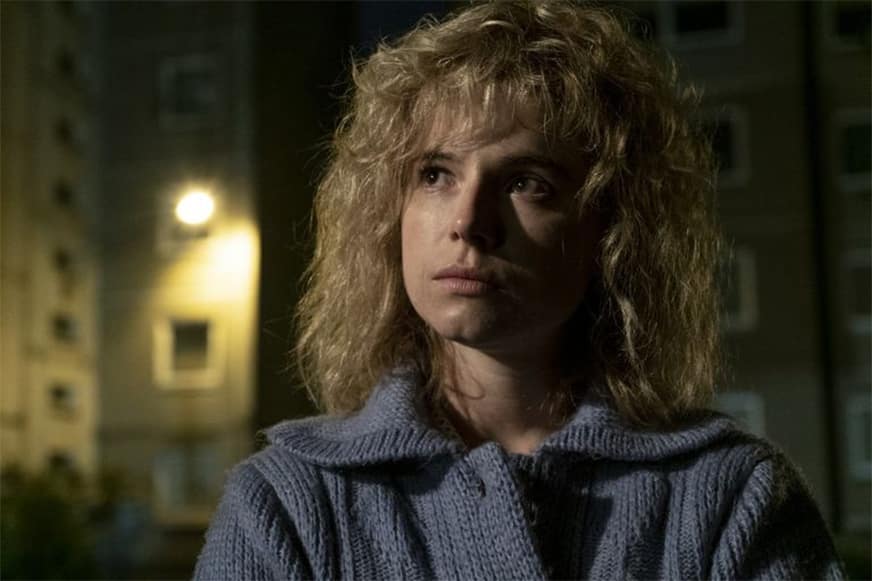
Chernobyl is very brilliant indeed, and quite a huge part of its brilliance is that it portrays shocking things happening as they actually did – the metal hinges on the reactor building’s doors crumbling under intense radiation, the firefighters slowly putrefying and disintegrating, and the puppies. Oh, Christ, the puppies.
Its writer, Craig Mazin, has made a big play of how relatively underplayed and non-Hollywood the series is, but, obviously, it’s a TV series and it needs to make choices which smooth over narratively unwieldy facts to cram everything into five 45-minute episodes. So where did it diverge from the literal truth?
The internet being what it is, there’s been a lot of discussion on that score. Over on Reddit, for instance, a thread by a user who said that they grew up in the Soviet Union at the time sought to call out details which didn’t ring true. It quickly turned into an almighty barney about whether anyone would have used those exact faceted glasses to drink vodka out of at 4.30pm on a Tuesday afternoon in July when the wind was blowing south-east. It sort of missed the point.
Chernobyl is a historical drama, albeit a very finely researched and crafted one. If you want first-hand stories from the disaster, pick up Svetlana Alexeivitch’s peerless collection of oral testimonies from survivors and witnesses Chernobyl Prayer, also known as Voices From Chernobyl. If you want the full rundown on why Mazin decided to make certain creative decisions you can listen to the very good companion podcast HBO put together, which we picked out as one of our top podcasts from last month. These are all the other bits which swerved from Chernobyl’s generally rigorous and terrifying adherence to the truth.
But you knew that already. She’s a composite character who’s meant to represent the broader scientific community across eastern and central Europe as well as Russia, which is quite a big burden for one person to carry.
Mazin says on the final episode of the Chernobyl podcast that the big court scene where Legasov goes in two-footed on the Soviet state was “inspired by factual circumstances”, rather than being literally what happened, and represents a “compressed” version of the trial, which Legasov wasn’t actually present at. It would’ve been very long and very boring if it’d been presented literally as it happened, over several weeks and involving loads of people we’d never seen before.

Everyone threatens everyone else with being shot if they don’t shut up and do as they’re told. Fly this helicopter over that reactor, or I’ll have you shot. Tell me how a nuclear reactor works, or I’ll have you shot. Get me a Twix or I’ll have you shot. Stalin was a big fan of the old summary execution – hoo boy! He and his administration really loved ’em – but 30 years after his death they’d rather fallen out of fashion and it’s a bit dubious as to whether the threat would have carried the same weight as it once had.
You’ll recall that Legasov warns the pilot of the chopper taking him and Shcherbina toward the reactor that they’ll all die of radiation poisoning, or that the helicopter will drop straight out of the sky because the intense radiation will destroy its electronics. If you weren’t looking carefully, it looks a lot like that’s exactly what happens to another helicopter which heads over the reactor, but in fact it hits a crane and plummets to the ground. That did actually happen – but only weeks later.

The series is happy to encourage the idea that nobody from the crowd which gathered to look at the bright shaft of blue ionising light bursting into the sky survived the dose of radiation they received. Even if it hedges its bets by saying “it has been reported” that everyone died. However, the actual evidence is a bit sketchy, and Adam Higginbotham, author of Midnight in Chernobyl, told the Bulletin of the Atomic Scientists that he’d interviewed a chap who was stood on the bridge that night and was quite demonstrably alive.
The New Yorker notes that while Legasov lived in relatively down-at-heel surroundings, he “would have lived in an entirely different kind of squalor than the fireman did”. The Moscow Times’ Leonid Bershidsky claims that grim setting “would have been far below his station” as a nuclear scientist, even after being discarded by the state.

This is a particular sticking point – Mazin himself says he didn’t want to do the old thing of having everyone call each other “comrade” because it sounded a bit hackneyed and Westernised, but was told to keep it by a woman who lived through the time and checked his script for inaccuracies, and who said it was how most people greeted each other most of the time. Bershidsky, though, says that by 1986 people “didn’t go calling each other ‘comrade’ except at Communist Party meetings”. So the take home appears to be that different people used it differently in different parts of an absolutely huge land mass.
Now, this is a tricky one. It’s part of an absolutely harrowing reminiscence from Lyudmilla Ignatenko taken directly from Chernobyl Prayer, but it’s not really possible. Ignatenko might recall losing her baby four-day-old baby that way; that doesn’t mean that that’s literally what happened. If you’ve the inclination to argue about the death of a child 33 years ago, there’s a whole Reddit thread on the subject which gets into the nitty-gritty of how a quickly growing baby might, maybe, absorb more radiation that the mother but it basically misses the point of the drama. Either way, it’s extraordinarily upsetting and bleak.
Comments
Add comment